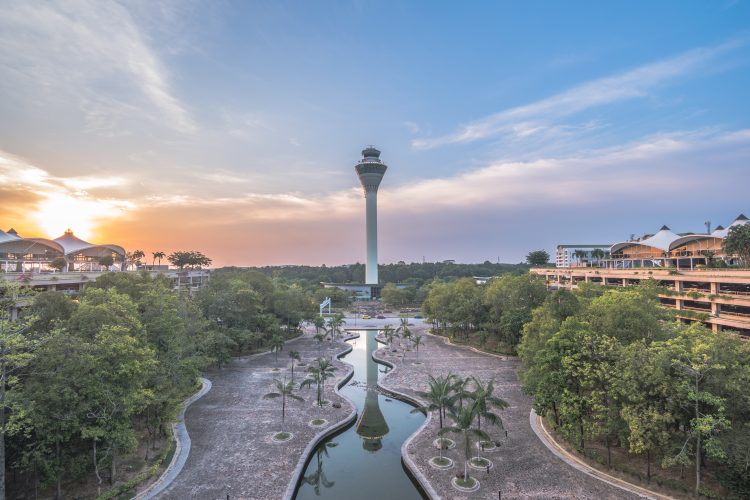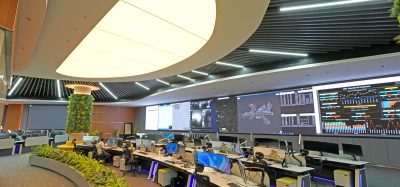Network advancement: the key to Kuala Lumpur International Airport’s digital evolution
Posted: 22 May 2024 | Huawei | No comments yet
Major airports today are all undergoing a digital revolution, aimed at improving passengers’ boarding experience while also enhancing airport systems, from security to retail with the help of cutting-edge technologies. Although technological advancements like VR/AR applications, and IoT have brought possibilities for the sector, we also need to be aware that they have increased the load on infrastructure readiness. Upgrading the airport’s networks, which are the foundation of the digital system, is crucial to solving this problem and catering to the future needs.


Kuala Lumpur International Airport’s digitalisation journey
Kuala Lumpur International Airport (KLIA) started to develop its digital systems in 2018. As the flagship international airport managed by Malaysia Airports Holdings Berhad (MAHB), KLIA benefited from the group’s Airport 2.0 initiative.
Those early first steps have now been superseded by the latest Airports 4.0 initiative, empowered by Huawei‘s Fully Connected Fibre Network Solution. The primary objective of this initiative is to enhance connectivity and real-time information exchange, which can only be accomplished by connecting all passengers, tenants, airport staff and other stakeholders.
And it centres around four key areas of digital transformation:
- Terminal operations: Use data and analysis to improve daily operational efficiency.
- Passenger experience: Provide passengers with more control over their journeys and more personalized services.
- Security and safety: Redefine airport security and passenger safety using target recognition and intelligent video analysis.
- Employee activity and productivity: Improve employee efficiency through digital means.
Working with Huawei, the market leader in digital airport technologies, Malaysia Airports has implemented multiple types of digital solutions across the airport’s ecosystem. Aligning with the initiative’s core and key domains, Huawei’s networks solutions have improved both the passenger experience and airport operational efficiency, which also benefits revenue generation. The establishment of secure and reliable networks has become the foundation of Malaysia Airports’ digital operations.
Upgrading operations
While new digital technologies are improving the passenger experience, the needs of freight operators and customers have not been forgotten. Airlines and cargo forwarders provide transport services from airports that, in turn, need high network reliability and security. The original network architecture of Malaysia Airports faced major obstacles since they had to abandon manual configurations to become totally smart.
The primary challenges that the airport faced were:
- Poor reliability and scalability: Airport services and surrounding tenants required numerous virtual local area networks (VLANs). However, the two core switches were operating at near-full capacity, preventing the deployment of new service systems.
- Manual configuration and difficult O&M: Malaysia Airports’ service systems used to be manually configured and were prone to faults, resulting in time-consuming and difficult repairs. It took at least 10 days to roll out new service systems for airlines, ground handling departments and airport security.
- Critical services could not be isolated: Air traffic management (ATM) authorities and some airlines required physical isolation for independent networking, while Malaysia Airports could not meet this requirement.
To overcome these challenges, Malaysia Airports adopted Huawei’s fully connected fibre network solution. With its reliability, agility, simplicity, and environmental consciousness, KLIA successfully addressed all major challenges faced during its digital transformation, establishing a robust connectivity framework for transitioning from Airports 2.0 to Airports 4.0.
Unlike traditional network architectures, Huawei’s solution uses a dual-plane architecture that combines Internet Protocol (IP) and Dense Wavelength-Division Multiplexing (DWDM) technology. The router and DWDM planes back each other up for cross-domain protection, capitalising on physical and logical service isolation to provide a highly reliable bearer of services for ATM authorities, airlines and terminals.
By utilising Gigabit Passive Optical Network (GPON) and 10-Gigabit Symmetric Passive Optical Network (XGS-PON) technology, Huawei’s solution achieves natural Layer 2 isolation, mitigating risks such as network storms. In addition, the solution features passive aggregation so that fewer extra-low voltage rooms (ELV rooms) are required, and airport operations will become greener and more efficient. The solution also supports flexible capacity expansion from GE to 10GE high-bandwidth networks, which can transmit Ethernet frames at a rate of 10 gigabits per second, without restrictions on bandwidth or distance and cables re-routing.
Going optical
As installed in Kuala Lumpur, the digital network is based on optical fibres instead of copper cables that could only cover 100 meters at most. Developed to handle increasing demands on networks as systems have to communicate between airports, often across international boundaries, the latest iteration of Huawei’s Fully Connected Fibre Network Solution was on show at the recent Airports Innovate Exhibition in Muscat, Oman and was officially introduced into the Middle East market.
Moussa Huang, Director of Global Aviation Business, Huawei’s Smart Transportation BU, explained how Huawei’s Fully Connected Fibre Network Solution can adapt to these changes in demand.
Huang mentioned that to establish a future-ready airport, it is significant to ensure seamless connectivity across all ecosystems and people. The airport network must be robust, simple, and easily manageable. As what he shared, Huawei simplified the whole architecture of the network in the airport. By adopting this simplified and reliable network, airports can optimise operations, enhance passenger experiences, and improve overall management effectiveness.
As Malaysia Airports continues to enhance the specifications of its operational system, it needs an increasing number of smart terminals and higher bandwidth. Huawei’s iMaster NCE-IP solution – the industry’s first platform for network automation and intelligence, integrating management, control, analysis, and Artificial Intelligence (AI) functions – helps the roll out of Airports 4.0 applications on massive terminals. It delivers E2E (end-to-end) services in one click, meeting the airport’s development requirements for the next five to ten years.
With Huawei’s help, KLIA took only four and a half months to migrate and upgrade the entire network. Usually, such a large-scale project would take 12 to 18 months.
Future airports
Since the transformation supported by Huawei, Malaysia Airports ‘s new networks boast a capacity that is at least 10 times larger than that previously. Secure and efficient networks enable passengers, merchants and staff to enjoy the benefits of digital airports.
“Airports of the future will be expected to deliver ultra-reliable connectivity in all areas, providing a seamless travel experience for passengers. This places higher demands on airport networks which Huawei’s systems can support,” Nelson Huang, Vice President of Huawei’s Smart Transportation BU said.
Automated processes and powerful network capabilities enrich the passenger experience. Online check-in brings shorter queues and less congestion, passengers can find their flight schedule and boarding gate using a mobile app and then travel smoothly from the airport entrance to the boarding gate. This delivers a smooth boarding experience that helps airports manage passenger traffic effectively, reduces congestion at all checkpoints and ensures passengers can spend time shopping or dining at airport stores.
Intelligent airports cannot be built overnight. The need to deliver an excellent passenger experience and satisfy customer demands will always come first. Huawei commits to helping its partners and customers to develop airports with both a transport hub and a destination by delivering the ultimate memorable airport experience through continuous technological innovation.
Full case story about Malaysia Airports:
Related topics
Data, Digital transformation, Passenger experience and seamless travel, Safety, Security, Terminal operations


















